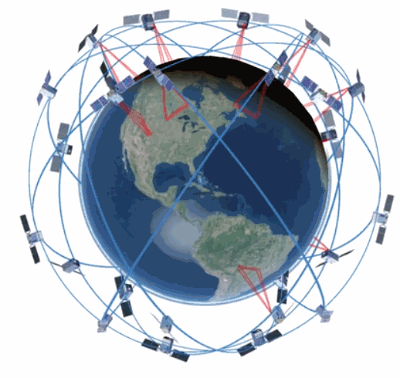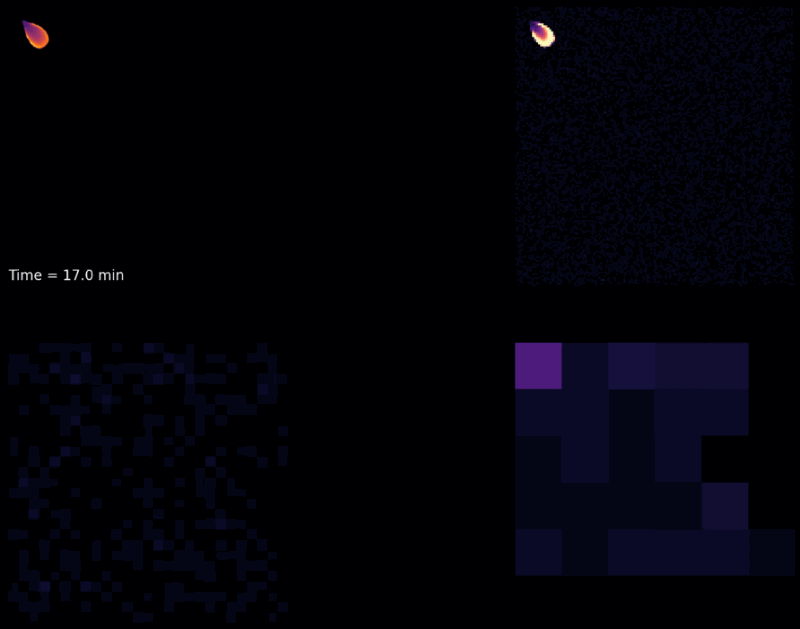Muon Space plans a ‘turnkey solution’ for custom Earth observation satellites – TechCrunch

Plenty of companies want to operate in space, but few have or need the expertise to do so. They want an eye in the sky, but not a satellite company. Muon Space is one of several startups looking to put others into space, but with a special expertise in Earth observation and building the full stack, from satellite bus to data on the ground. It has already raised $25 million to do so, and locked down a few early big customers.
“People are reinventing large portions of the stack required to collect data from space,” Muon’s CEO and co-founder Jonny Dyer explained. “When we look across the spectrum of different new phenomenologies and missions, many of these companies are developing their own spacecraft, and obviously their own ground segments and data, so they can address a particular vertical market. We think that doesn’t make sense.”
To invent an example, consider a solar farm builder. They want to use satellite imagery to monitor their work and provide a data point on the resilience of their installations over time, looking for things like hot spots, broken panels, and so on. They basically have two options. One is to use imagery from existing private satellites like Planet’s, which may or may not collect the type of data they want, at the frequency they want. The other is to build their own satellite and pay to put it in orbit — probably a nine-figure endeavor.
Muon is looking to provide a third option: a specialty space data partner that helps a company build an Earth observation platform, from soup to nuts. That means designing the sensors, the bus, the navigation and telemetry systems, and the downlink and ground infrastructure needed to support this data-heavy industry.

Image Credits: Muon Space
Of course this won’t be cheap either, but it’s cheaper than building a satellite division yourself, and you’d be working with a crew that’s already made and launched several satellites and has made a specialty of Earth observation. Dyer was a principal Engineer at Google Geo, and Chief Engineer at Skybox, and the rest of the crew has been built around remote sensing as well.
“Our team is somewhat unique in the depth and breadth of our expertise in these systems,” Dyer said, “but also the data utilization component — what’s needed to make these things valuable.”
Among Muon’s early customers are Google, the Environmental Defense Fund, and another undisclosed partner, all of which it must be said will probably make good use of the company’s first three spacecraft, which use a different method of imaging the Earth than you might expect: microwaves.
“It’s a class of observation we call signals of opportunity,” said Dan McCleese, Muon’s Chief Scientist and formerly of the same role at JPL. The sensors they’ve built capture reflected radio waves in the microwave spectrum that have been emitted by other spacecraft, meaning they don’t have to send any out themselves.
“You can think of it as a form of radar. It’s a key measurement used by NOAA and NASA for weather prediction — there’s been a lot of technological development in reducing the size and cost of these sensors, but they need to get lots of them in the air to reduce the temporal resolution,” said Dyer — meaning reducing the time between observations of a given location.
In this case the microwave land monitoring method would be useful for monitoring wildfires — everyone wants to know where they are in real time, but the gear in orbit right now simply can’t provide that information. Muon provided a simulation of how its satellites (top right) would be able to visualize a spreading fire compared with what’s up there (bottom row), which you can see below:

Simulation of monitoring a wildfire. Clockwise from top left, simulated ground truth, Muon’s satellites, GOES, VIIRS.
This is just one of the many remote sensing opportunities out there relating to climate change and environmental monitoring and modeling, markets Muon is hoping to target first.
Notably, the spectrum that its first satellites monitor can be adjusted via software, much the way radios can be tuned that way — it can’t suddenly become an infrared detector, though it can change its mission to support other bands of interest. But beyond the passive microwave radar, Muon is hoping to take advantage of other technologies that have been pioneered but not yet deployed widely.
“We also have longer term interest in other parts of the spectrum,” said Dyer. “Multispectral, hyperspectral, infrared… and there are optical architectures that allow a similar approach to collecting very broad bandwidths and then selecting what you need.”
Their plans include using instruments developed by agencies like NASA that have no active mission.
“It’s interesting,” put in McCleese, “NASA is putting a lot of effort into coming up with the means and technology of doing smallsats, but they’re largely in the field of demonstrations. There is an enormously rich area of demonstrated instruments by NASA, JAXA, etc that are not being picked up for continuing observation. The demonstration was the focus, then the project comes to an end.”
A bunch of cutting edge Earth observation tech sitting on a shelf just waiting for a tech transfer application is certainly a good place to start. Dyer said they will combine this with the company’s own accumulated expertise in the area and advances to “start from first principles in the ecosystem.”
“We want to provide a turnkey solution to formulate a set of sensors to address their problem, and go with them to full deployment of operations and data to meet their business needs. In many ways we think of the question of deploying sensors in space inside out,” he said, designing the satellite and data handling around the use case rather than vice versa.
The $25 million A round was led by Radical Ventures, with participation from Costanoa Ventures, Congruent Ventures, Space Capital and Ubiquity Ventures. “It definitely gets us to space, easily through the first three spacecraft, and it gets us to an MVP level on the support structure for those missions,” said Dyer.
Expect Muon’s first spacecraft to go up starting in November of next year on a SpaceX Falcon 9 rideshare mission if all continues to go well for them.
Recent Posts
- Peta Fraksi dan Kilas Balik Pengesahan UU HPP Pangkal PPN 12 Persen
- AmaWaterways offers ‘savings galore’ for wave campaign
- Kapolda DIY Periksa Pistol dan Surat Tes Psikologi Anggotanya
- NEWH, Inc. Awards $75K in Scholarships During BDNY 2024
- Why coal is being burned more than ever as demand in China and India soars despite carbon emissions warnings | Science, Climate & Tech News
Recent Comments